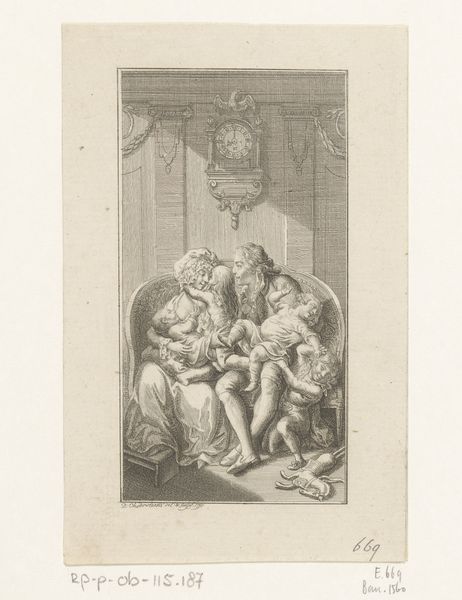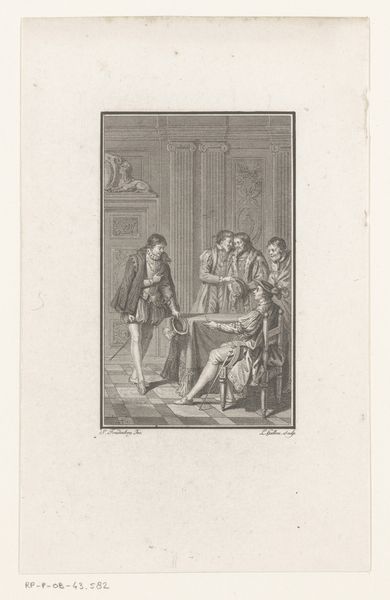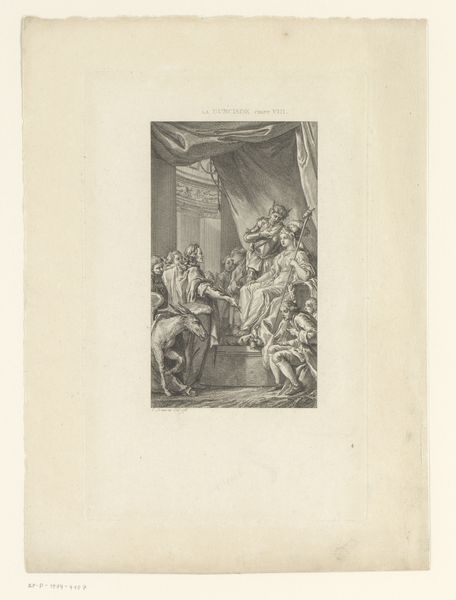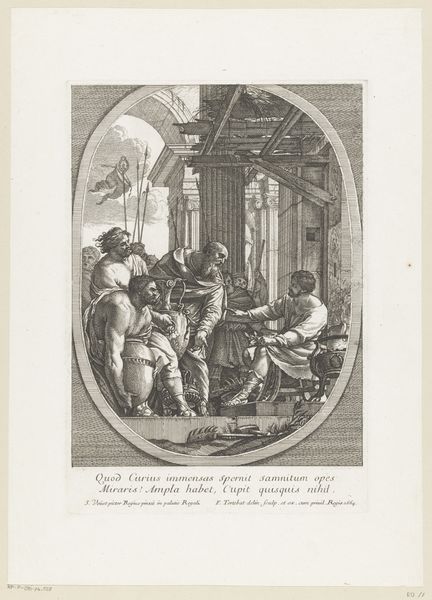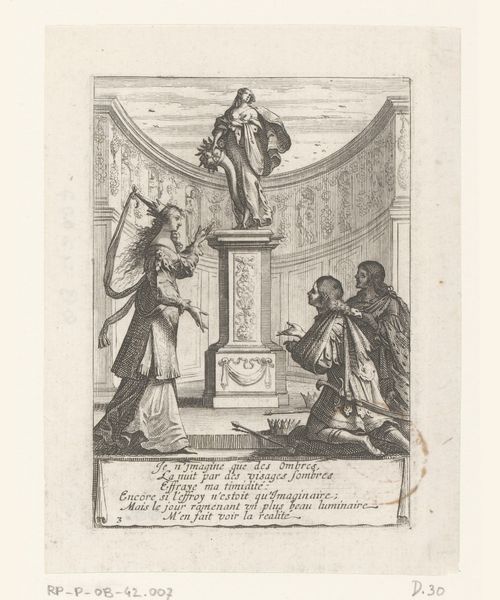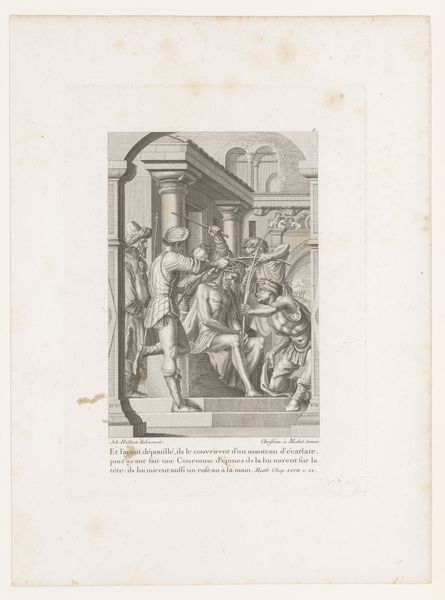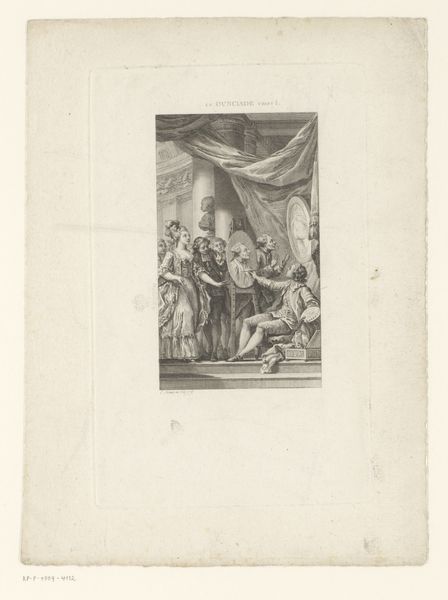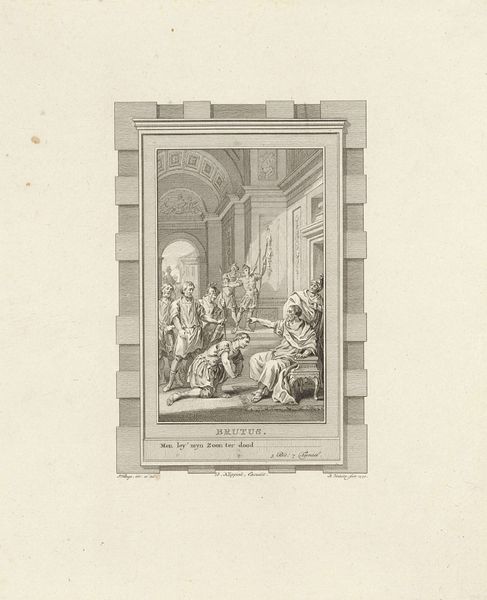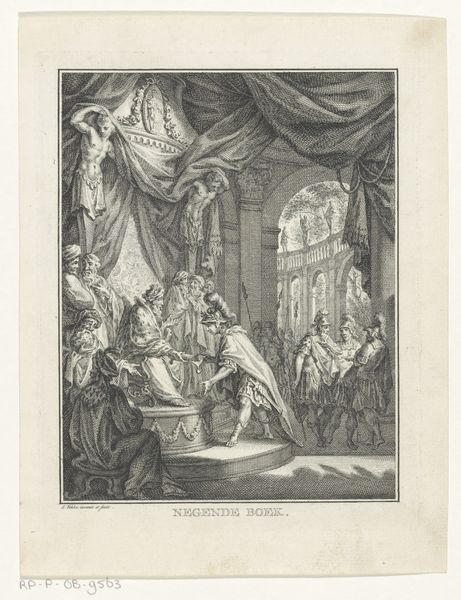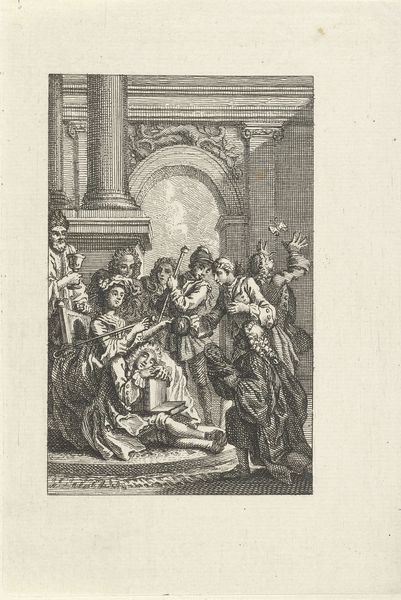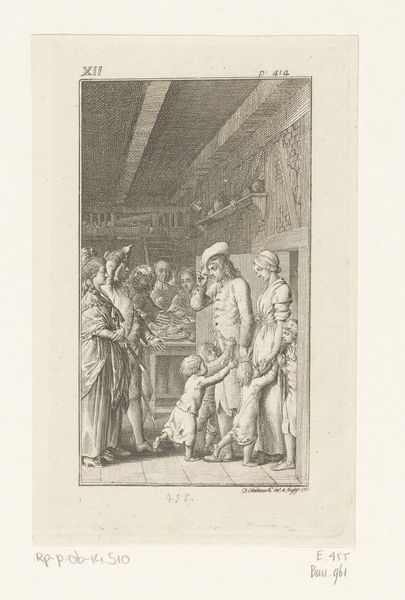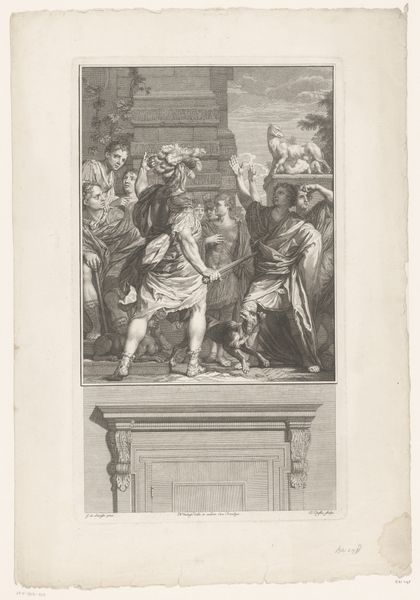
print, engraving
#
baroque
# print
#
old engraving style
#
classical-realism
#
figuration
#
history-painting
#
engraving
Dimensions: height 250 mm, width 182 mm
Copyright: Rijks Museum: Open Domain
Curator: This engraving, "Offer aan Pan" from the 18th century, presents a scene that seems both timeless and tied to a specific moment in its creation. Editor: Yes, I see what you mean! It's like a freeze-frame from a classical drama, all rendered with such precise lines. How do you see the materials and the process influencing the reading of this image? Curator: For me, it begins with considering engraving as a medium – the labor-intensive process of carving into a metal plate, the reliance on reproductive technologies to disseminate imagery. Think about who had access to engravings like these in the 18th century. Editor: So, not mass consumption, more likely upper class folks decorating their homes? Curator: Precisely! This image circulated within a sphere of privileged viewers familiar with classical tropes. How does the choice of imagery – this 'Offer to Pan' – function within that social context? Was it purely decorative, or did it serve a more ideological purpose? Consider, also, the specific economy of printmaking during that era. Editor: Like, the artist needed to sell the engravings to make a living. It was their job? Curator: Exactly. So we are looking at the labor involved, the materials used, the targeted consumer, and the image being reproduced all pointing towards an upper class desire to connect with art. Also notice that Latin text below the image, another connection to higher society during that time. How does that perspective change the way you understand the image? Editor: It shifts it from just a pretty picture to a commodity with layers of cultural meaning! This connection to history is fascinating to learn about! Curator: Absolutely, and that’s why looking at the materiality and social context of art is vital.
Comments
No comments
Be the first to comment and join the conversation on the ultimate creative platform.
